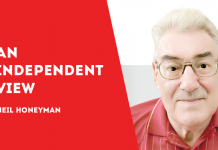LAST month I read an account of Bancassurance as expressed by BPI (Bank of the Philippine Islands) – Philam Life Assurance Company’s President Surenda Menon.
Bancassurance is when insurance salesmen are based inside the bank’s premises so as to be able to sell to the bank’s clients. It is claimed that to the bank it is a cross-selling strategy. (Cross-selling is when a different product is sold to an existing customer).
In theory both the bank and the insurance company benefit. I can see how the insurance company may benefit because it automatically has access to the bank’s customers.
How does the bank benefit? It obtains commissions from the insurance company for sales that are made.
How does the customer benefit? It receives approaches from the insurance salesmen or bank staff acting as a go-between the bank and the insurance company.
I am uneasy about Bancassurance because there is a big difference between the culture of a commission-based insurance salesman and a substantially salary-based bank employee. I am also uneasy because in a Bancassurance relationship, commissions from sales to bank customers are obtained by both the insurance salesman and bank staff. This extra layer of commissions may create a conflict of interest for bank staff if anything goes wrong (and it can). Specifically, the commissions paid to bank staff produce distance between themselves and their customers.
***
In late August 2008 an advertisement appeared for a Bancassurance product marketed jointly by Banco de Oro Unibank (BDO) and Philam Life. BDO was Philam Life’s Bancassurance partner at the time. To add further reassurance to the potential client the advertisement stated that the insurance product was “principal-protected” by AIG, Philam Life’s American parent company. The product offered at least a 25 percent return on the investment, constituting a single premium which was to be held for five years.
The product seemed safe.
But was it?
Within a week of the advertisement’s appearance, rumors spread that Philam Life’s parent company, AIG, was unable to meet its obligations.
Within a further week, it turned out that the rumors were true and, as it later turned out, AIG needed to be bailed out by the US government to the tune of $182.3 billion, a huge amount which was greater than the Philippine national debt at the time.
Clearly there was bad faith somewhere. Whether the bad faith was confined to the US or whether Philam Life had some indication that it was marketing a product when its parent company was financially unsound does not really matter to the customer who had been misled.
In the case of one family member who bought the product but never received the policy documents, the experience was deeply unpleasant, particularly when the Philam Life representatives maintained an inappropriate ascendancy over the hapless individual.
Years later, I found that Philam Life claimed to receive a “quit claim form” which included my signature. I most assuredly did not sign the document, nor should have done, because the transaction had nothing to do with me.
BDO queried Philam Life about the failed transaction but Philam Life’s response was garbled and did not address BDO Legal’s request for a timeline. Naturally, BDO had second thoughts about Philam Life as a Bancassurance partner and bought in Generali to handle its customers’ Bancassurance requirements. The Bancassurance relationship between BDO and Philam Life was terminated which was when Philam Life turned to BPI as a Bancassurance partner.
I am glad that BPI-Philam is clearly a successful entity under Surendra Menon’s stewardship.
But buying insurance products in the Philippines is clearly a circumstance under which ‘caveat emptor’ (let buyer beware) is appropriate./PN





